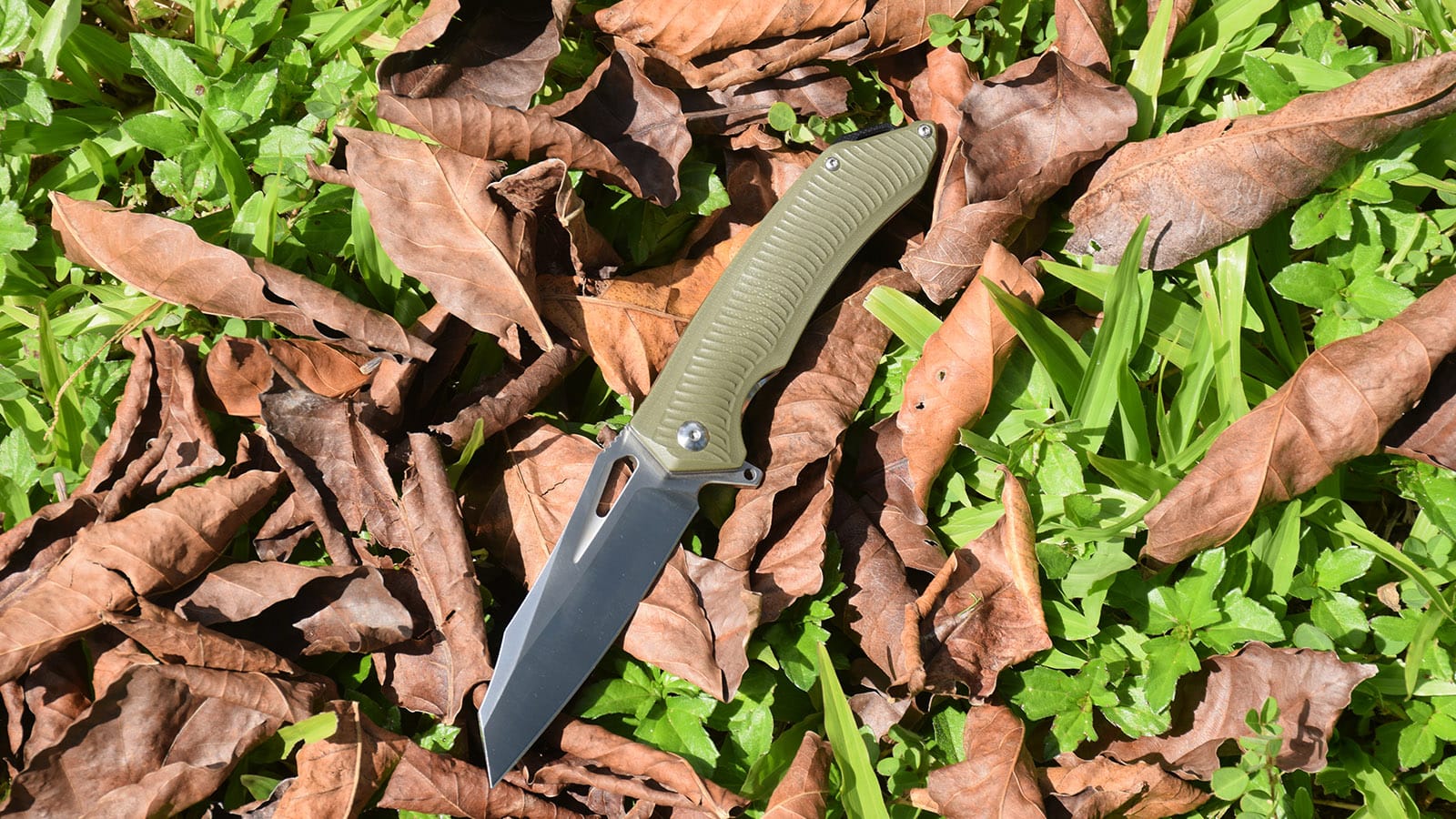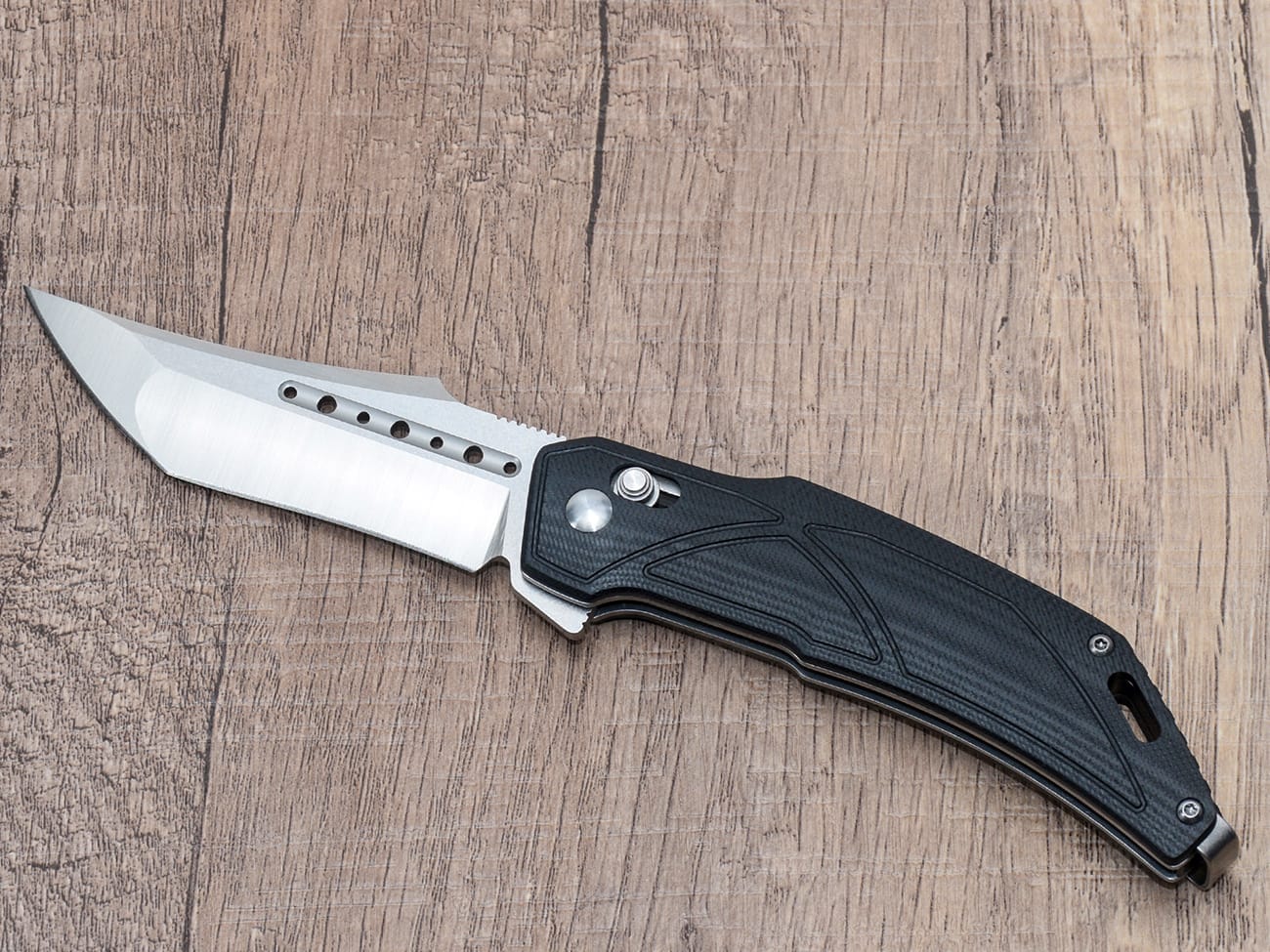Whether you’re new to pocket knives or looking to refine your technique, understanding how to properly open a folding knife is crucial for both safety and functionality. This comprehensive guide will walk you through various opening methods, safety considerations, and expert tips to help you master the art of knife deployment.

G10 handle folding knife with black blade and pocket clip
What Makes a Folding Knife Different from Other Knives?
A folding knife differs from fixed blade knives through its pivot mechanism, which allows the blade to fold into the handle. This design makes it more compact and portable while requiring specific opening techniques for safe operation.
Common Types of Opening Mechanisms
Modern folding knives employ various opening mechanisms. Here are the most common types:
- Thumb studs
- Flipper tabs
- Thumb holes
- Nail nicks
- Assisted opening systems
- Button locks
How Do Thumb Studs Work on a Folding Knife?
The thumb stud is one of the most popular opening mechanisms. To use it:
- Hold the knife firmly in your dominant hand
- Position your thumb on the stud
- Apply pressure outward and upward
- Guide the blade into the fully open position
Understanding the Flipper Mechanism
EDC knives often feature a flipper mechanism, which protrudes from the back when closed. This deployment method offers quick, reliable opening:
- Grip the handle securely
- Place your index finger on the flipper
- Apply quick, firm pressure
- Allow the blade to rotate into position
Is the Spyderco Thumb Hole Design Better?
The thumb hole design, popularized by Spyderco, offers several advantages:
- Ambidextrous operation
- Larger contact surface
- Smooth deployment
- All-weather reliability
Safety Considerations When Opening a Knife
Before attempting to open any folding knife, consider these safety points:
“Safety isn’t just about technique—it’s about mindset and awareness.” – Knives Illustrated
- Always point the blade away from yourself and others
- Maintain a firm grip on the handle
- Be aware of the lock mechanism
- Keep fingers clear of the blade path
How Do Different Lock Types Affect Opening?
Various knife lock types influence how you should open the knife:
| Lock Type | Opening Consideration |
|---|---|
| Liner Lock | Monitor lock engagement |
| Frame Lock | Watch for over-travel |
| Button Lock | Ensure button clearance |
| Axis Lock | Verify lock retraction |
Maintaining Smooth Opening Action
To keep your knife opening smoothly:
- Clean the pivot regularly
- Apply appropriate lubrication
- Adjust pivot tension as needed
- Remove debris from the lock mechanism
What Are Common Opening Problems and Solutions?
Sometimes folders can be stubborn. Here are typical issues and fixes:
- Won’t open: Check for debris or pivot tightness
- Sticky action: Apply lubricant to pivot
- Lock resistance: Clean lock surfaces
- Uneven opening: Adjust pivot screws
Tips for One-Handed Opening Techniques
Mastering one-handed opening requires practice:
- Start with a properly maintained knife
- Practice in a safe environment
- Focus on smooth movements
- Build muscle memory through repetition
Key Takeaways for Safe and Effective Knife Opening
- Always prioritize safety when handling knives
- Choose the opening method that suits your knife’s design
- Maintain your knife regularly for optimal performance
- Practice proper technique in a controlled environment
- Be aware of local laws regarding knife carry and use
- Keep the pivot and lock mechanism clean
- Never force a knife open if it resists
Remember, mastering how to open a folding knife safely and efficiently comes with practice and patience. Whether you’re using a traditional pocket knife or a modern tactical folder, these principles will help ensure safe and effective use of your cutting tool.




